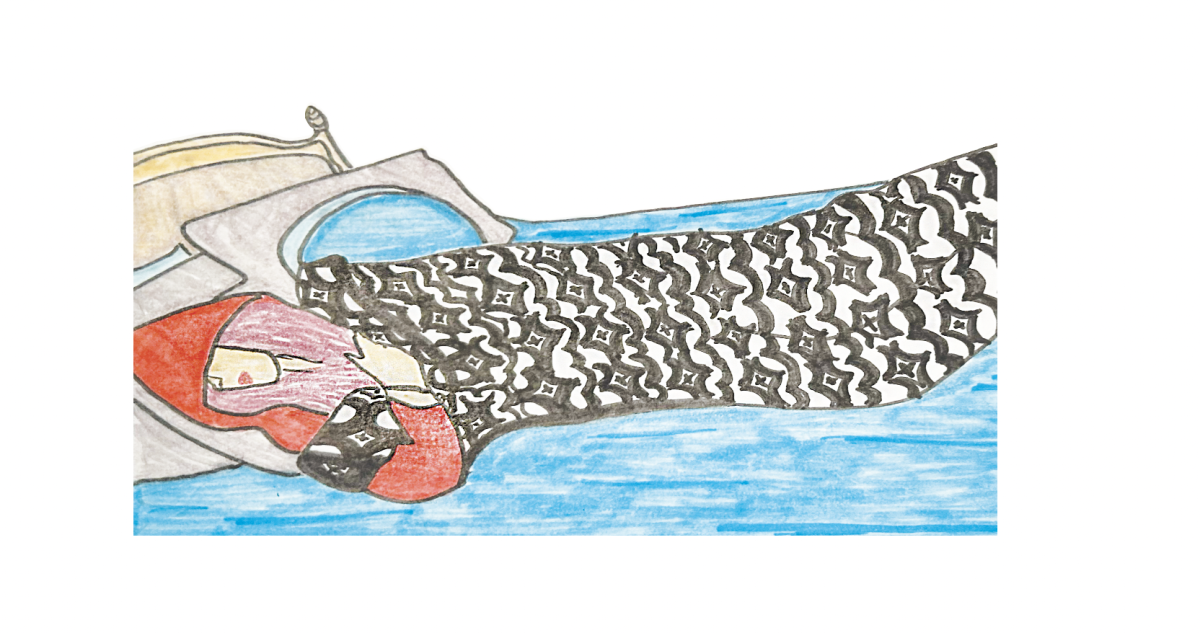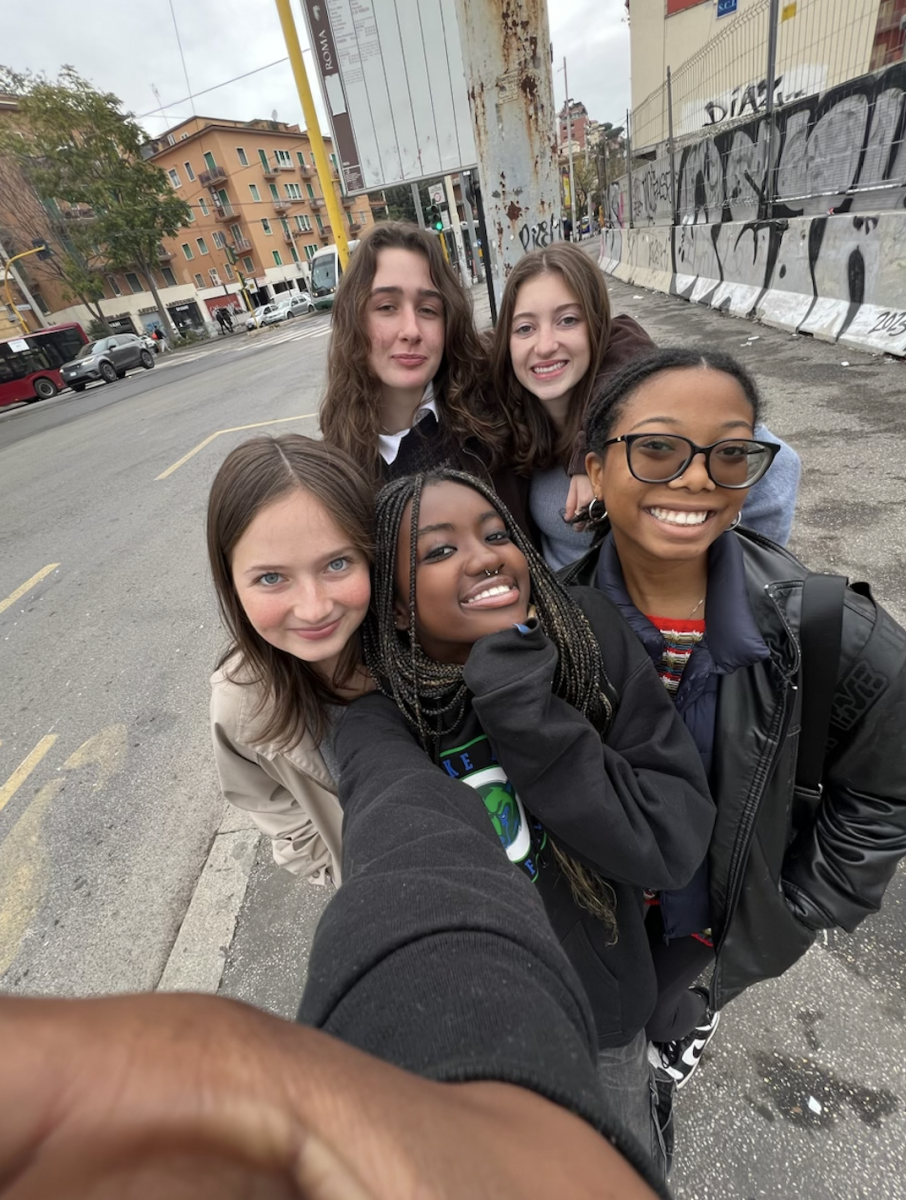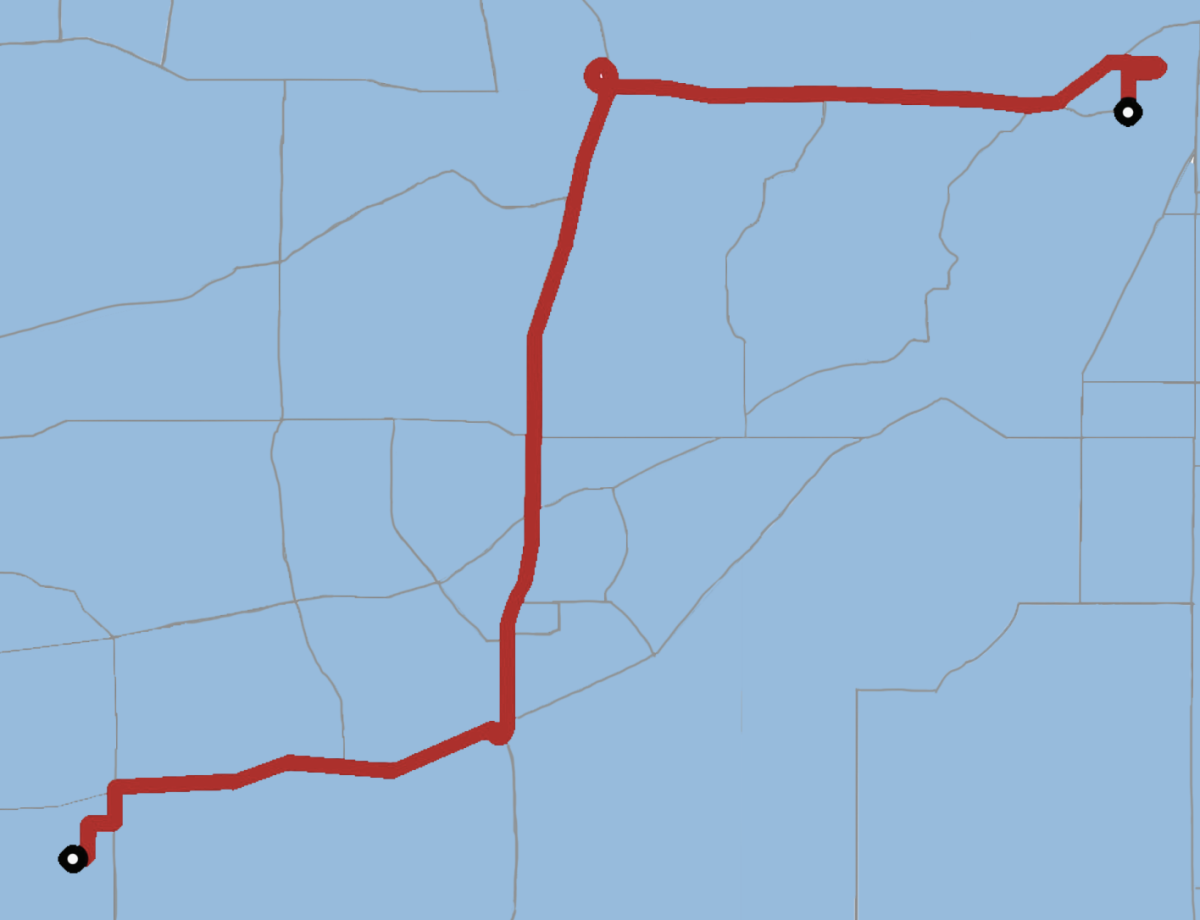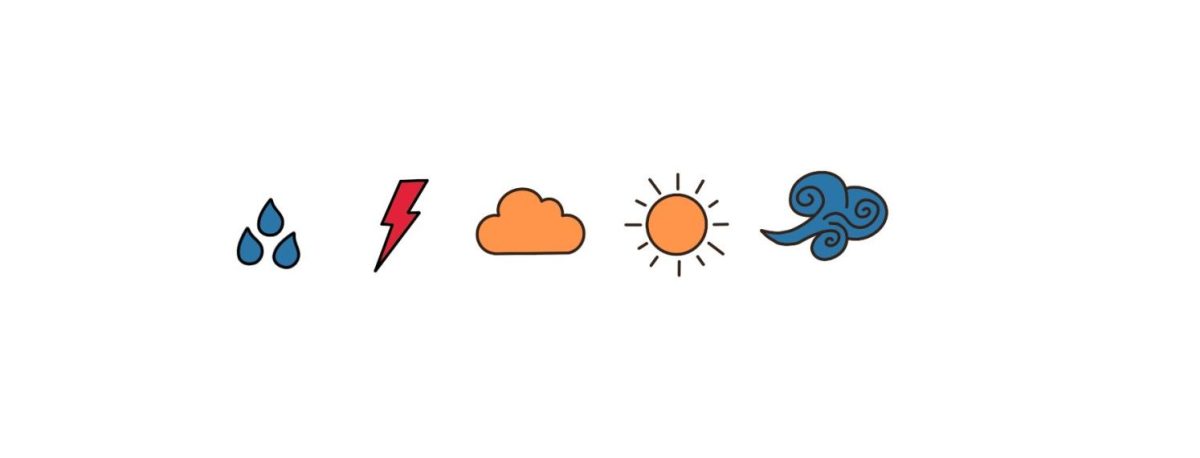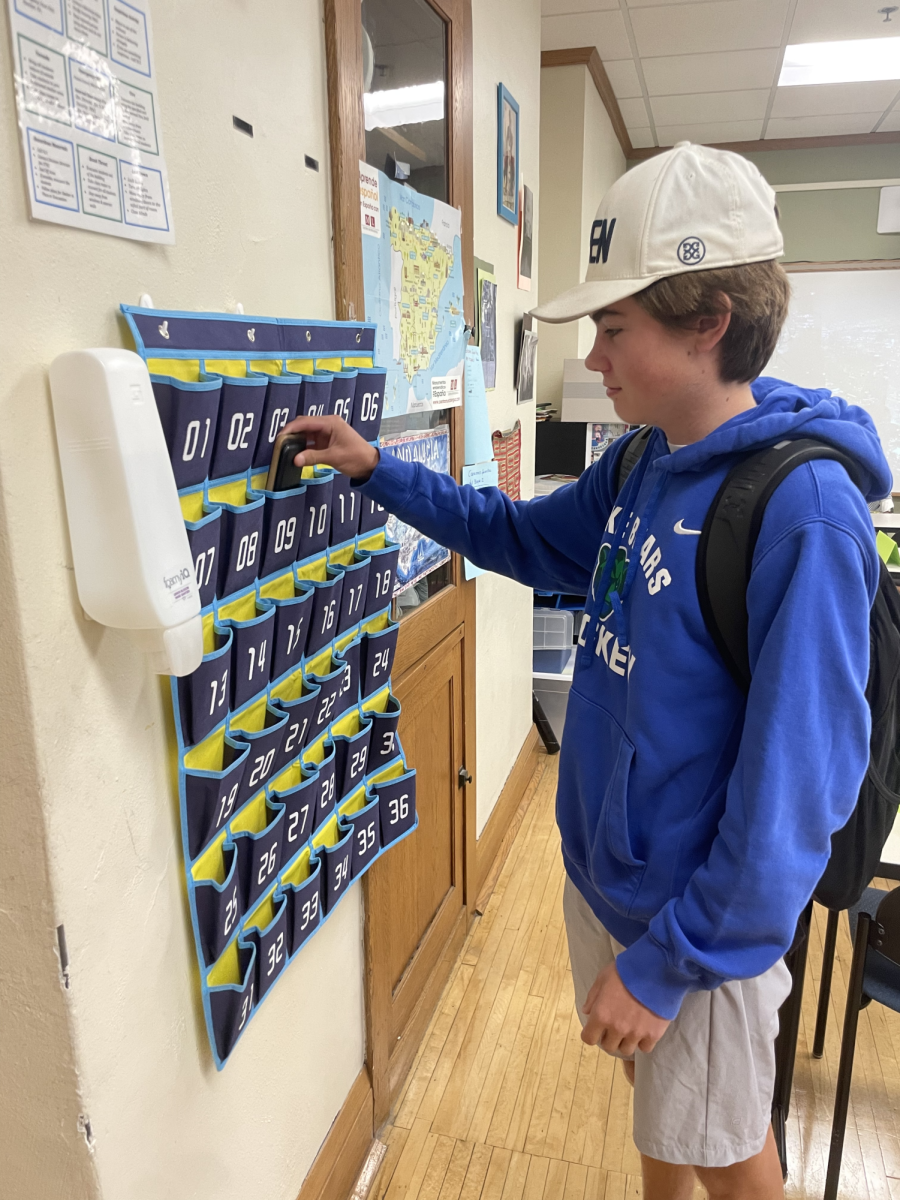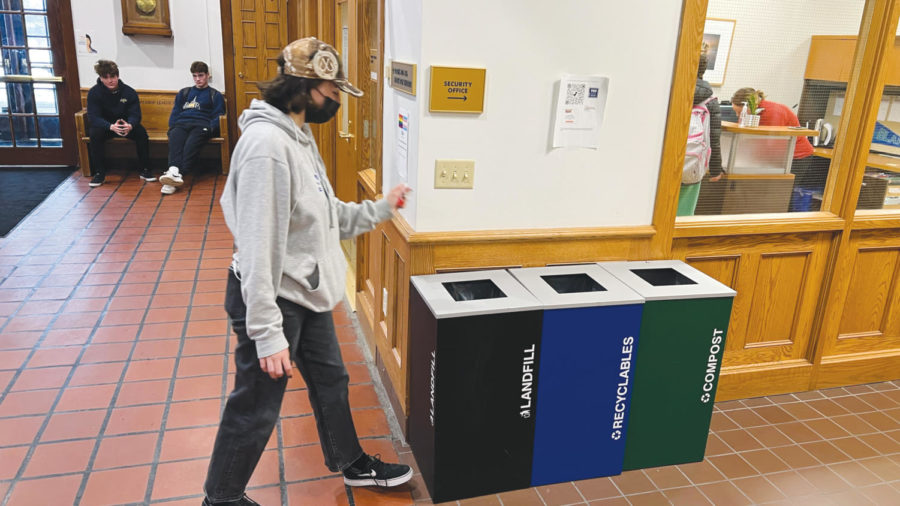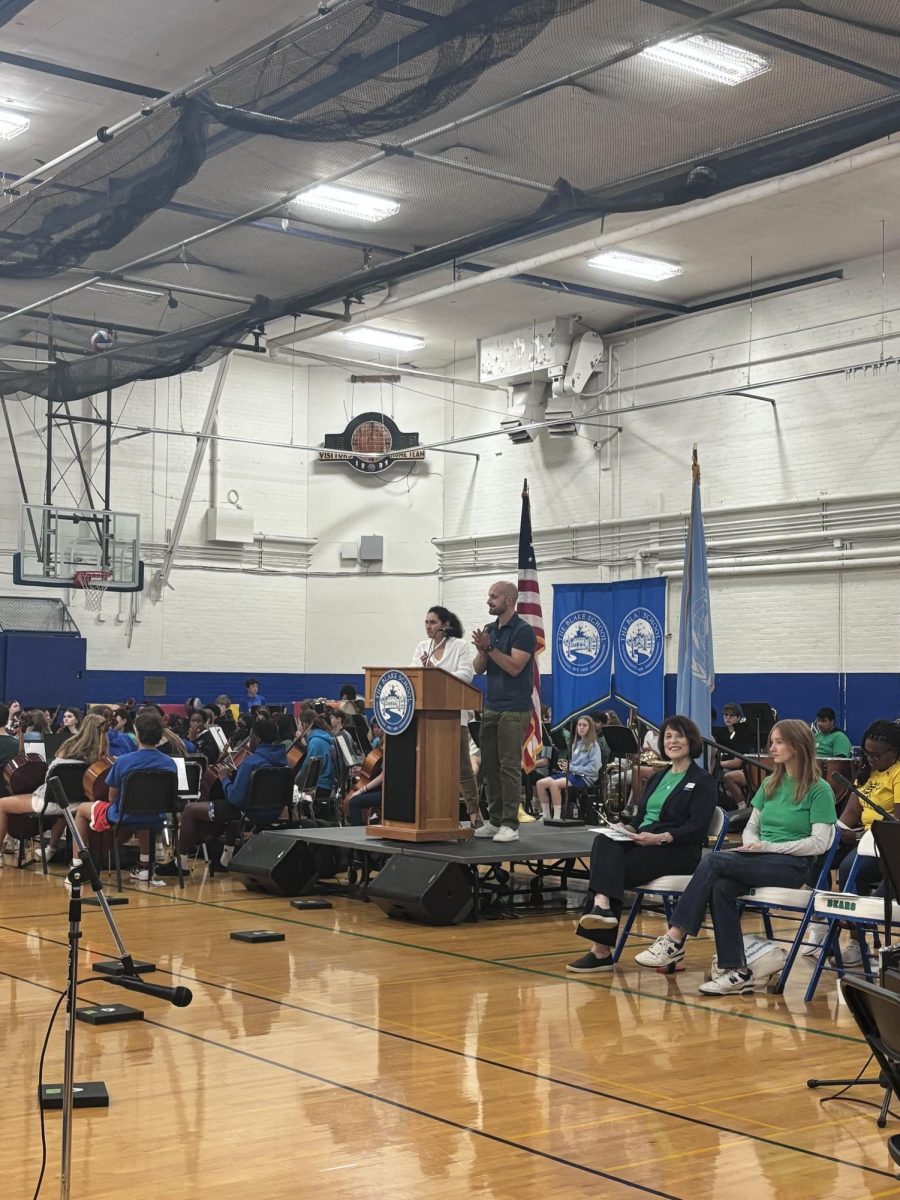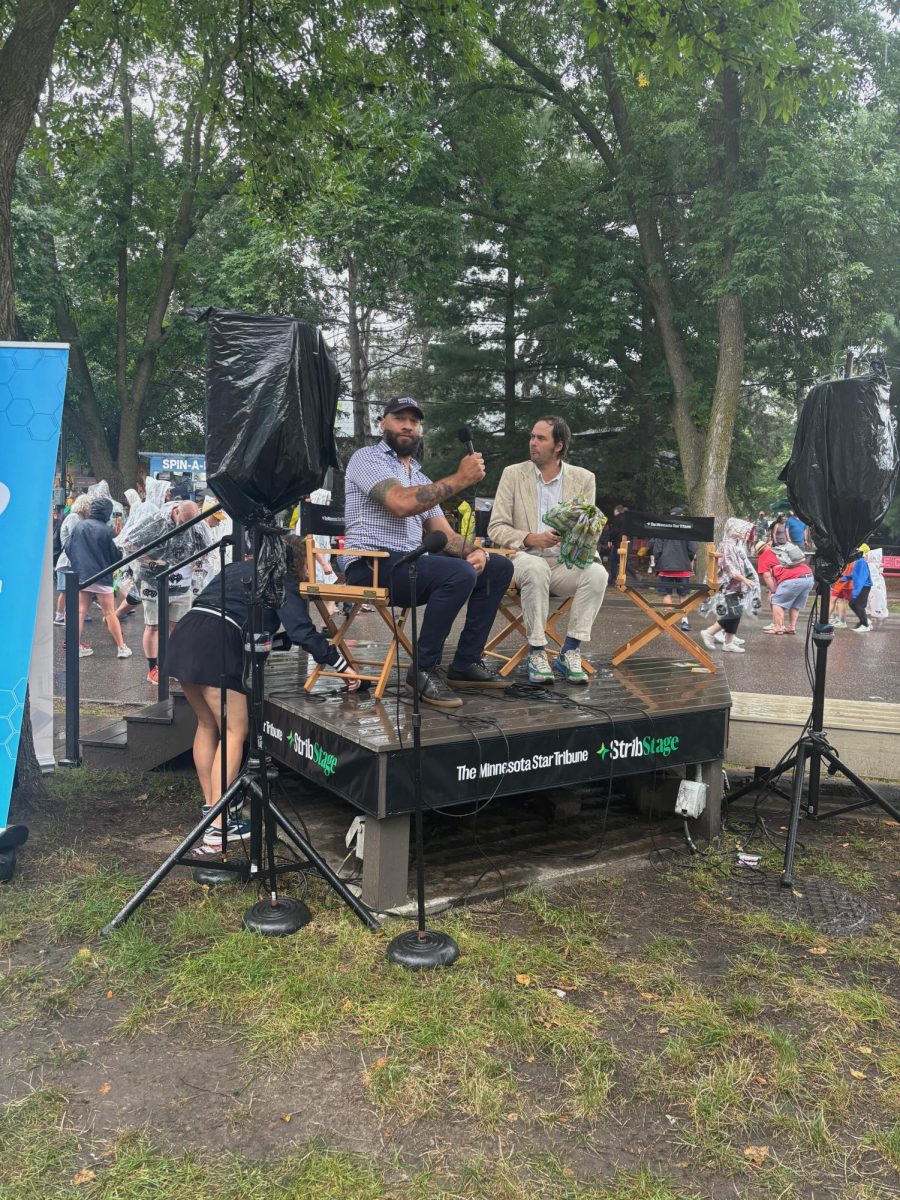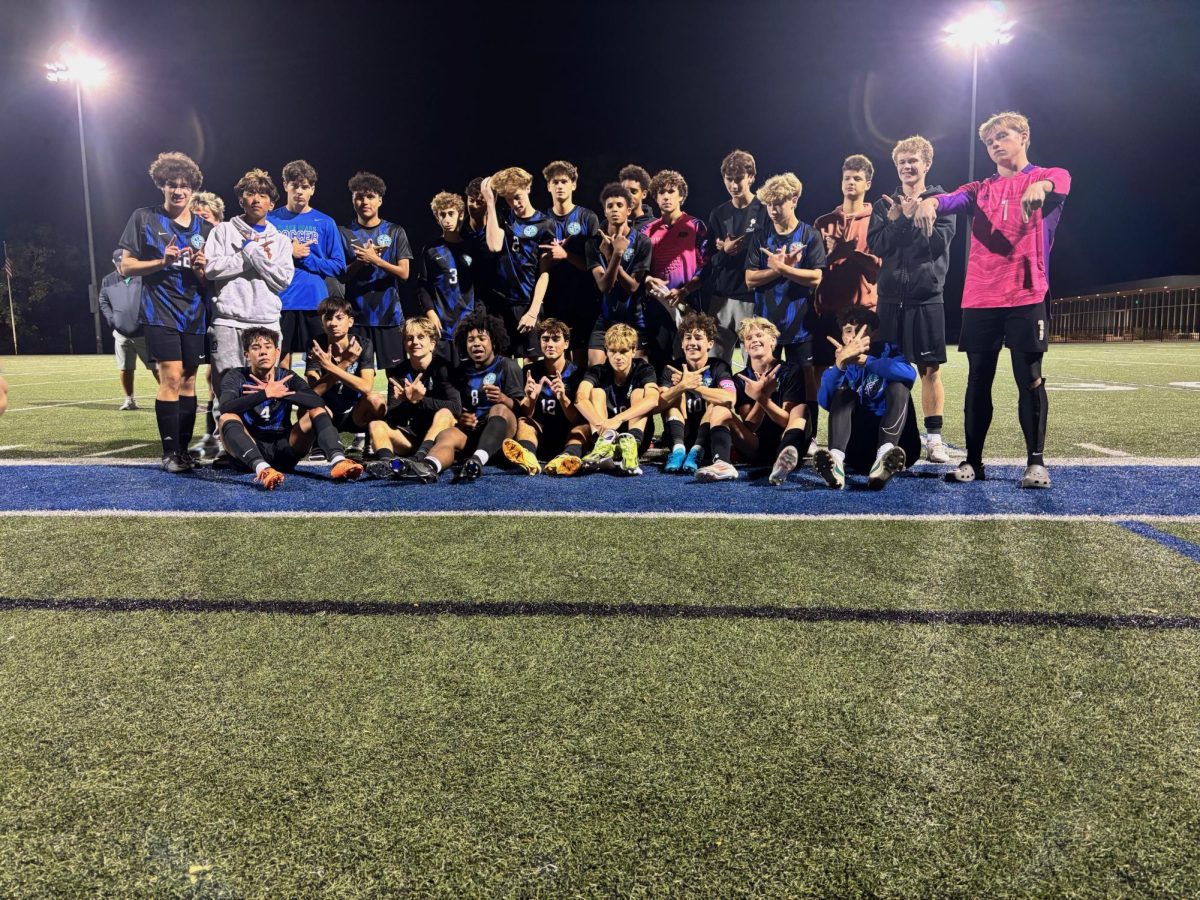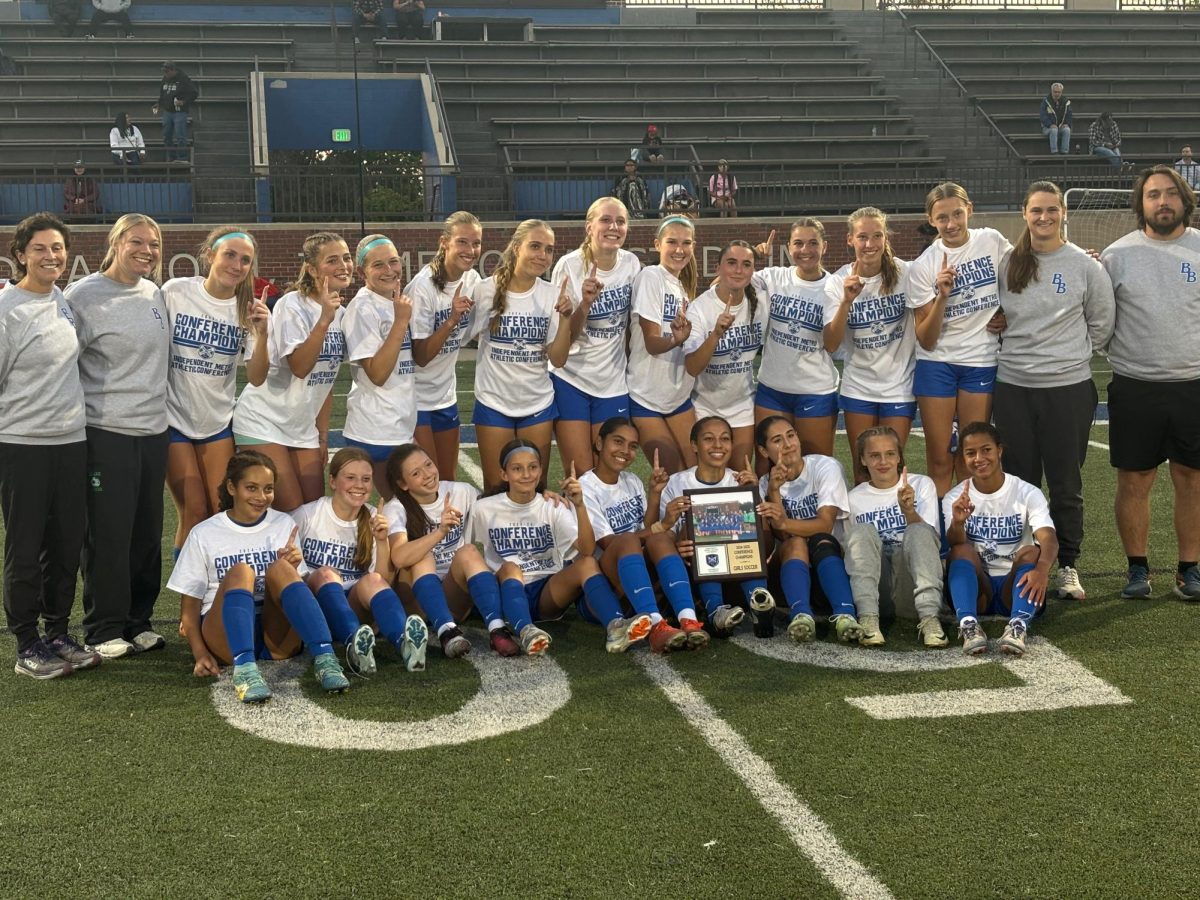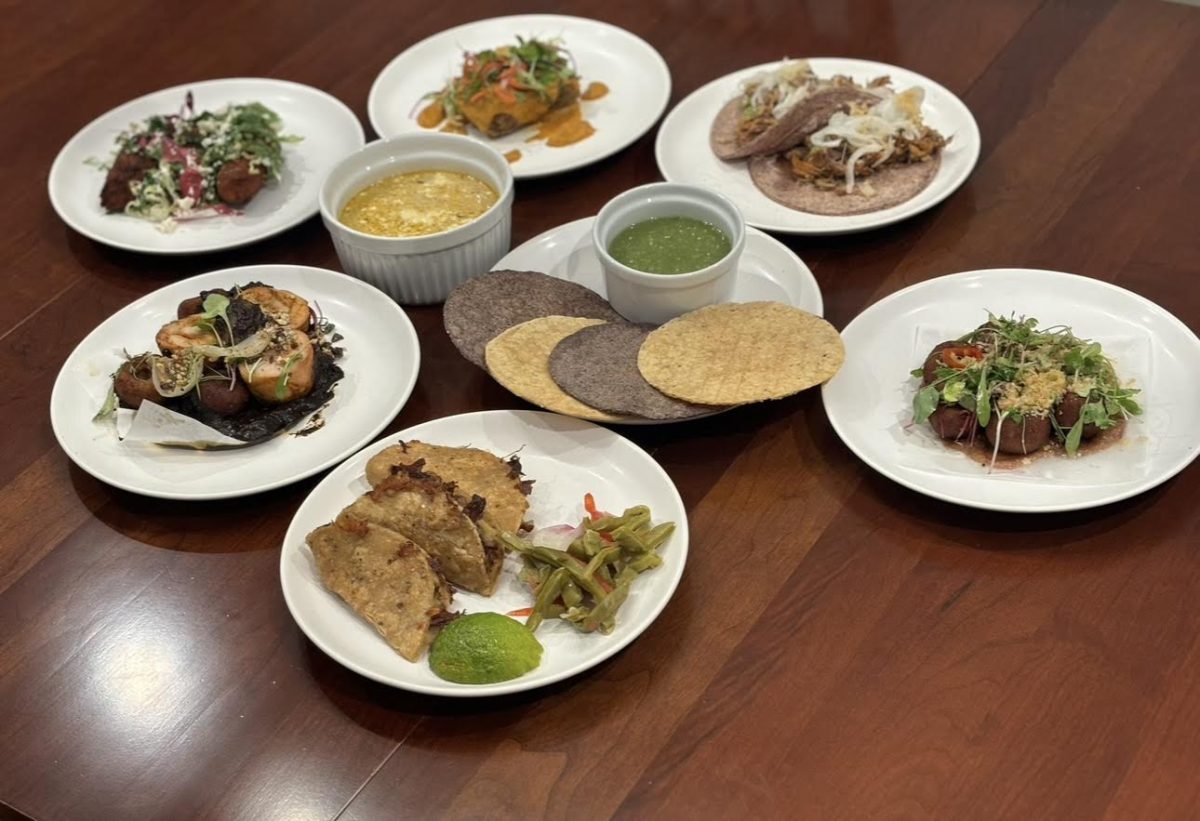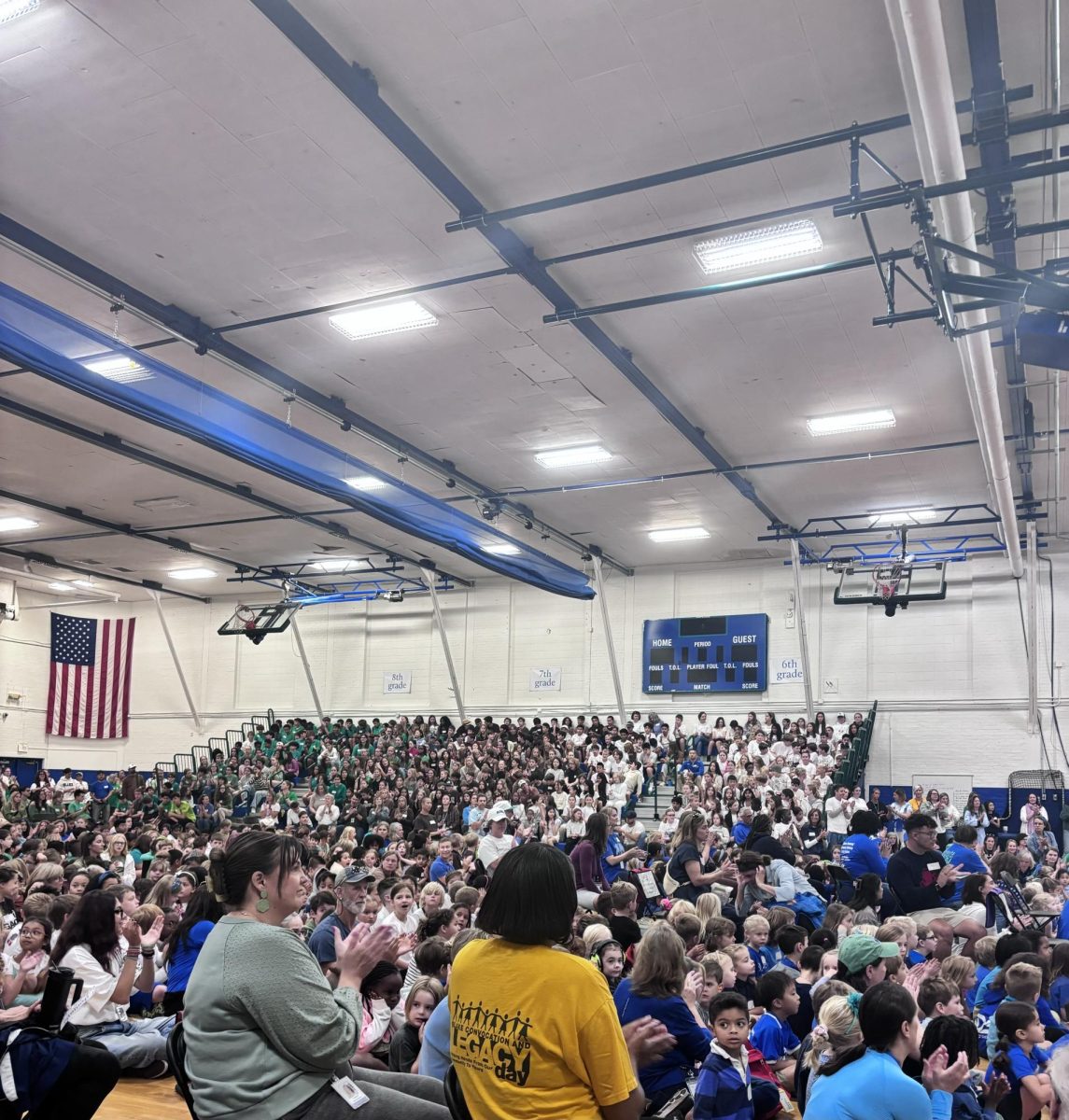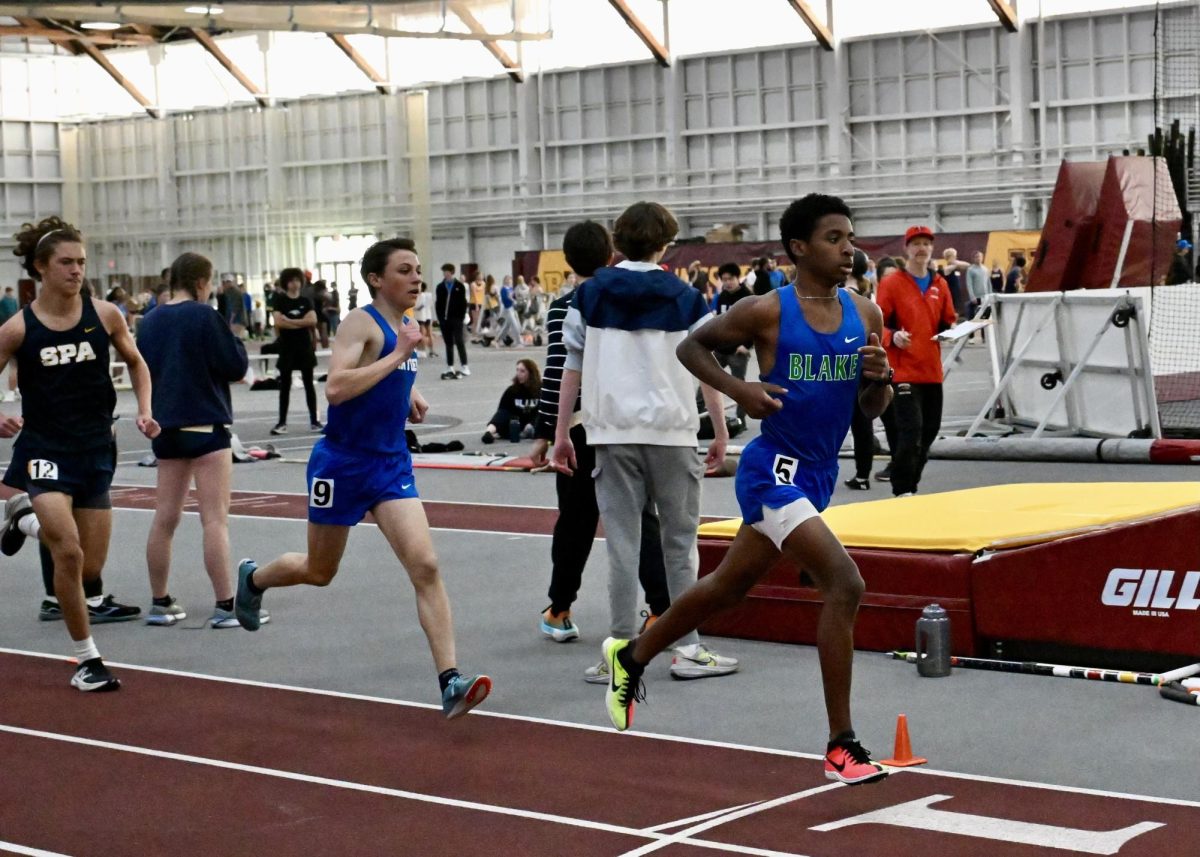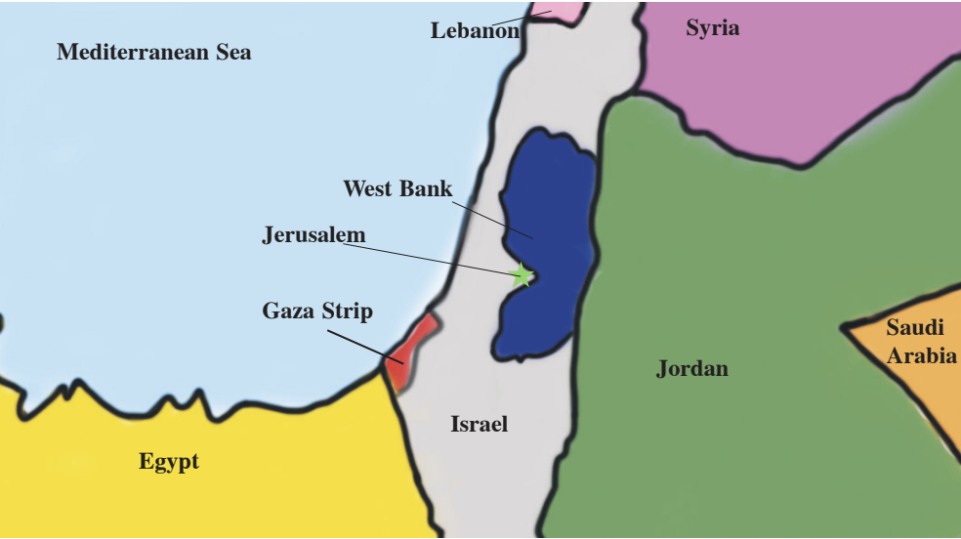
Israel-Hamas War
Beth Calderone, PK-12 Social Studies Department Chair, began leading the first of four Learning Lunches regarding the Israel-Hamas conflict shortly after the Oct. 7 attack on Israel with the intention of creating a space for processing and discussion.
Calderone described that on Monday Oct. 9, “there were a number of students in distress from a lot of different identities who were finding different adults in the building… [and] seeking out spaces and not finding adequate places to talk about it.” Calderone explained that she, along with Upper School Director Joe Ruggiero, decided to host a Learning Lunch the following Tuesday (Oct. 10) to create “a real opt-in space as opposed to [something] on the spot [in] a required class like Social Studies,” she said. As the war continued, Calderone kept up with subsequent Learning Lunches, with one each week for the first few weeks of the war.
“Learning Lunches are not a new thing,” Calderone said. “When there are current event spikes where we feel like there is something really big in the news or in the world where we want to carve out space, the Social Studies Department has hosted these before. We had Learning Lunches like this around Supreme Court cases that have come out, when the Derek Chauvin trial occurred, and during the Me Too movement.”
When deciding how to structure the lunches, Calderone explained they knew early on that they would not be able to meaningfully teach any history. “It’s a hard space in effectively 18 minutes to teach a history lesson on a hundred-plus years of a very complicated situation,” Calderone said. “It became really clear that wasn’t going to be the kind of learning that we were going to do in that space. [Classrooms are] a more appropriate place to unpack the competing narratives of the why and the how of the war itself.”
Spencer Schmidt ‘27 first heard of the Israel-Hamas war on social media, but because of the influx of misinformation and competing narratives circulating the internet and news outlets, she explained she turned to the Learning Lunches for information.
“I want to know what people are so worked up about and what’s going on. I’m seeing all these contradictions online about basic facts.” Schmidt said. “I feel like I haven’t learned much from the Learning Lunches, to be honest. I wanted somebody to set the record straight, but I haven’t really been getting any help on that front.”
In response to students who came to Learning Lunches looking for facts, Calderone commented, “I appreciate and I totally hear that, and also, we felt like that was best served in future, thoughtfully designed social studies classes.” She continued, “When we talk about, ‘What are the facts of this war? And what’s the true information?’ Well, it sure depends on your perspective.” She explained the purpose of the lunches, “It’s more of a setting the tone for the empathy and the way in which you approach learning about this topic that I think we were more interested in when you come.”
As someone who has been following the larger Israel-Palestine conflict since Middle School, Davin Khan ‘24 attended Learning Lunches not to learn more about the conflict, but rather prepared to hear other students’ and faculty members’ perspectives following Hamas’ attack on Oct. 7.
“[My motivation] was mainly to hear from other people at Blake, how they were feeling, and what their perspectives were. I have my own perspective, and I guess I just wanted to hear from other identities and other people, what was the consensus, and then also share my own,” Khan said.
However, Khan hasn’t experienced this kind of discussion during the lunches. “It’s hard because it’s such a short period, and it’s such a complicated thing to talk about,” he said. “Normally, it’s less about people sharing their perspectives and more talking about what are good news sources to look at, what have been the recent developments. It’s really talking about talking. Like, ‘How do we have these conversations?’ but then we’re not actually having the conversations.”
Khan added, “It feels like it’s setting the ground rules and how this is an important conversation and not really going into people’s perspectives.”
Many responses to a survey Spectrum sent to the student body on how the school is addressing this conflict echoed Khan’s sentiment of treading lightly and talking around the topic.
Calderone commented, “I think it’s a valid concern, and I, as the department leader, am certainly pushing my colleagues in the department to practice more. We need to practice and also be courageous in our classrooms to open up space in our social studies classrooms to do this. I feel strongly that it is in the classrooms where we have already set the table with community norms about how best to have these conversations.”
“I’m also aware of trying to assess student need,” Calderone said. “When you look out in a classroom of 16 kids, what are the needs at any given moment of really pushing on a conversation that one or two students really want to have and the other 14 are not interested or might be a little traumatized in having. There’s this range of to what end to have these conversations if they’re not thoughtfully planned and have clear learning objectives that are linked to the skills and the learning of the course.”
Dion Crushshon, Social Studies teacher and Director of Global Programming, spoke of a similar process of assessing student need in his classes during these kinds of conversations.
“With all my classes, I do sort of respond to who’s in the room,” he said. “The thing that I’m a little bit nervous about is folks who kind of just don’t care being in the same space with people who are deeply affected.”
“I will say there’s a part of me that feels like I should bring it up more in my classes, there’s a part of me that feels like I could do damage if I bring it up in classes if it’s not handled well,” Crushshon added. “There’s something about the feeling that I should talk about it more and then kind of the ambivalence, this other feeling that I don’t know if it’s even worth it, if it’s even going to be worthwhile, if it’s going to be helpful or beneficial.”
“For a lot of people here, it’s just another thing that’s going on across the world,” Sophie Chester ‘26 explained. “It’s a heavy topic. War is always a heavy topic. It’s even a heavy topic for me to listen about, so having to hear about it day after day after day, it gets to be a lot.”
Chester has friends from her summer camp who live in Israel and recalled getting Snapchat messages from them during Hamas’ attack on Oct. 7 explaining that the people who had invaded were 20 minutes away from their house.
Chester explained that she tries to stay away from the news more now because of how overwhelming it can be. “Before we physically knew what was going on, everything was going around on the internet,” she continued. “Before we could even stop ourselves, I think a lot of people saw things they wish they didn’t like images and videos.”
“Once you see something you can’t unsee it, once you hear something, you can’t unhear it,” she said. “I’ve seen some things that I wish I could unsee. I’m trying to just take a step back.”
Crushshon described a situation in one of his classes in which, like Chester, he understood that not engaging with the conflict was likely the most productive. He explained, one of his students left class when he was discussing the conflict. “[When] the one student in class who I perceive has the strongest feelings is opting out of this discussion, well then I don’t know if it’s worth it,” he explained. “And sometimes we think that it’s for them that we’re bringing it up, ‘for them’ meaning whatever issue it is, the identity the most affected, we think.”
An anonymous survey respondent reiterated this idea, “I think sometimes people forget that discussing this conflict is not a theoretical exercise. It is real and personal for some of us.”
Despite the pushback from some students, 64% of student survey respondents called for the conflict to be addressed more in classes.
Schmidt expressed, “I wish maybe we could spend a bit more time [learning about the conflict] in Social Studies.” She continued, “We had a lesson in my [World History] class about it, but [it] was just the historical context. Nothing was from after the year 2016, so I have a lot of information on the history of Palestine and Gaza, but I don’t know what is happening now.”
Another survey respondent commented, “I think we could incorporate a little more time, especially in social studies classes, where students can share their respectful opinions about this current topic instead of just having informative lessons on the topic.”
Crushshon indicated that the community might still have some work to do before incorporating more discussions on the war into class. He described that he recently met with a milieu of teachers from different schools around Minnesota. “Everyone was talking about the fact that you can’t just like drop it into a class to discuss because not everyone even has the skills or the background knowledge to engage productively,” he said.
“I used to teach a class that was all issues-oriented, and it was like we discussed difficult issues all the time,” Crushson continued. “I could see, in that class, because everyone was sort of ready for it, we would try to talk about it more than a couple of times just because that’s the way the class was. We kind of followed the biggest current events and do updates on them.”
Although the idea of talking about talking might seem a little “cynical, it’s actually probably the best thing to just talk about how to talk about it as opposed to, ‘Alright, let’s get some opinions out there, let’s get into this,’” Crushshon explained.
Besides those who called for more coverage of the conflict, the majority of the remaining students, 30%, think the school should continue with the same level of coverage. “I think they’re having a just-right approach to the amount of conversations we’re having,” a survey respondent said. “It’s so they acknowledge that the conflict is happening without obsessing over it.”
In multiple survey responses, students wrote they believed the Learning Lunches skewed more pro-Israeli, to which Calderone addressed, “I think what that [comment] shows is that everyone has natural biases, right?” Calderone said. “I tried very hard to be thoughtful and to try to make it neutral in the framing of either the sources or the words [I use]. One of the teacher stances I try and take in presenting controversial issues is to try and be a neutral presenter but also recognizing that there is no neutrality. Everyone is biased and has things that seep in.”
Calderone furthered, “My sense of the composition of the students who came tended to skew more towards pro-Israeli in terms of the identities that were there.” She continued, “There might be [a sense that] it feels like there’s a narrative that’s being mirrored back by teachers of what students are saying.”
Calderone also addressed that those kinds of observations reveal a greater theme surrounding how we as a community approach the topic. “It also is a clear piece of evidence of people who are coming to these kinds of events also very much reading, ‘What’s the side?’” Calderone said. “That’s the trickiness of this particular topic. It sure feels like there is this push to take sides and this push to find out, ‘What is the bias? Is it the school taking a side?’”
“There is this intensity of scrutiny that I think has led to actually the opposite of what we want in those Learning Lunches, which was an honest and courageous way to talk about the messiness with empathy about the multiple narratives of this war,” Calderone said. “And not feel like you have to take a side, or if you take a side, how do you do so in a way that still shows a common humanity for the other side?”
Crushshon emulated Calderone’s idea of not needing to take a side. “I love having these difficult conversations, but I do feel actually a little bit, with Israeli-Palestine, that I’m not the most informed person, and I don’t even know how I feel,” he said. “Often when I go into difficult conversations, at least I know where I stand, and I can put it out there as a way of helping conversation if it seems right. If I don’t know where I am, and I’m kind of like this thoughtful person, how can I ask some 16-year-old to say that [they] know where [they] stand? And when people are so sure where their stance is at 16, I think that might be not good because this is as complicated as they come, this conflict.”
Khan shared a similar sentiment as Crushshon, acknowledging the complexity of his own perspective, “For me, it’s hard to talk about. It’s hard to say I’m really on a side of either one,” he said.
Calderone added regarding the pro-Israeli comments, “Even sort of that observation can lean into a feeling of, ‘Is that an accusation? That has a bit of a chill effect of ‘Are people coming to play gotcha?’” She continued, “I don’t know. There’s a bit of a nasty undertone to that, that sort of feels not in the nature of why we come here, why we’re doing what we’re doing, and not at all the commitment to pluralism or the core values of this school.”
Calderone believes that the community at large is likely not ready to have the kind of difficult discussions students desire. “There’s a bit of a sense that this is a hot topic and super controversial current event where we have such incredibly strong opinions in our community,” she said. “Until we do a better job of setting the table for the kinds of ways we are going to have these conversations, it does sort of feel like we’re playing games of gotcha instead of truly listening and learning. So until we’re there, I’m not sure if we’re quite ready to have those hard conversations.”
Have you been discussing this in class? How?
“The day after October 7th, all four of my classes talked about it. And then since then, it hasn’t really been brought up. We’ve talked about it at department of like, what do we want to do. You know we’ve been offering these learning lunches which attendance has been okay, but I would love to see it be more. So we have not talked about it formally since those first few days…I think what I was trying to stress was, a lot of it was kind of information, like here is what happened. The big thing I’m trying to stress to my students is that there’s so much information out there, and it’s coming out quickly, and there’s a lot of propaganda, and there’s a lot of opinions. And to really kind of try to figure out where is your information coming from, what is the source of this.”
How have you encouraged students to educate themselves?
“A lot of it, rather than being in class, has been working independently. I’ve had a lot of students come up before class, after class, in the hallways and ask me questions about these things. And so, a lot of it has been trying to look at multiple credible perspectives. Right, as a history teacher, a lot of this is rooted in history. So a lot of it is like, let’s go learn about what is the history of this? Not just post WW2, let’s go way back. It’s been encouraging, often times it’s been recommending what are credible sources to use to learn about that.”
What sources do you recommend for anyone who wants to learn more?
“Dr. Baroody tends to be the person I go to or Mr. Chanderomani when it comes to more Muslim history. Especially Dr. Baroody, she has a real specialty there. So a lot of that is talking to them and being like, what are these sources…I tend to start in academic journals, which is probably not something I’d recommend for students cause they’re not gonna be like- OH great, I can’t wait to go read a journal of Islamic studies! So I try to send them to things that are a little bit more accessible, but honestly, I’ve been sending them more to teachers. At this point, they’re a little bit more knowledgeable on the subject than I am. Umm, but I do feel like you could start out with Encyclopedia Britannica, just get the basics. And then it depends on what they’re interested in. Sometimes it’s like, they just wanna know the basic stuff, and I’ll say Wikipedia. You have to check it and make sure.”
Do you hear other faculty members/students talking about the conflict?
“Much more faculty members. I mean, we are always talking about what’s going on in the world. One of the things we’ve actually talked about is like– I’m surprised I’m not hearing more from students. I would say I talk every day about something that has happened with colleges. Obviously, the social studies department a lot, but I mean everybody really…What’s been really interesting has been like– why are we not hearing more about this from students? And we’re wondering, you know I have a theory, it’s totally anecdotal… Ten years ago, there was like a lot of fights! Okay, so the reason why students can’t just go and put posters up is because of that event. Because everyone’s putting up these posters like anti-police and pro-police, and fights in the hallways, and it was like, woah calm down… That was kinda how the school was for a while, there was a lot of us mediating debates and things going on in the hallways. And I’m wondering if it’s like, there’s been so much in your high school lives. I mean, we’ve had a pandemic, we’ve had George Floyd, and there’s just been a lot. And it’s a lot of really bad, really complicated things. So that’s kinda my theory, is like, students are just shying away from it. Umm, someone else thinks it’s all going on on social media… Rather than have that debate in the classroom, it’s like we’re just gonna do it through this. So, I’m surprised, I don’t know what the cause is, but I’m surprised I’m not hearing more about it.”
How do you create a safe space around these conversations since it’s such an emotionally loaded question for so many students?
“It’s always the hardest part. I try to remind people to listen. Right? I mean we need to listen to one another, sometimes people are coming at this from very very different place. So first of all, I want my students to know that they have that freedom to say what they’re going to say. I often come back to the idea of like- argue the point and not the person… Like, somebody says something that is offensive, or that is factually inaccurate and other students I’m like- explain why that is offensive to you. Explain why you don’t believe that to be true. Don’t be like: You’re an idiot! I feel like in our society, that’s tough, that’s what you all are seeing being modeled. You see a lot of name-calling, a lot of really like demonizing others rather than having just like a rational, let’s talk about what was that about that was offensive. And so I hope in doing that, and allowing that space that it creates a safe space for students to share their opinions. However, as I said, I’m not hearing as many kids talking about this as in the past.”
Do you think Blake provides enough background information on Middle Eastern History?
“Yes and no, I think they do if you want it. And whether that’s good enough or not, I mean we have so many things that we can focus on. Ninth grade… We do a whole unit on religion. Right? The roots of religion, where religion is starting out. Is that specifically focused on Israel and Palestine? No. But, within that, we look at Anti-Semitism, we look at Islamophobia, the relationship ship between that. So there is some of that roots, you know where it is all starting, what are their connections. But then it depends, if you take a World Religions class, sure. If you take the Holocaust and Genocides class, yes. If you don’t, you know if you’re taking AP Euro… you’re not gonna get much of that. And that’s really fair criticism. It’s an important topic, and obviously, now it’s like… we should’ve been teaching this all along! So, I think if students are interested in that then there’s that pathway to really learn a lot about it, but you can very easily go through your four years at Blake having learned very little about the root cause. And so I think trying to fix that is like, let’s have a learning lunch. Right? But then again, it’s putting the honnesses on students to be like- I wanna learn more about this.”
The Spectrum recognizes that this conflict is very complicated, and often, both sides claim that it was started by the other. Spectrum has decided that we will start this timeline when Western nations first get involved. Furthermore, the timeline printed on this page is not comprehensive.
November 2, 1917: The Balfour Declaration is signed
Arthur James Balfour, the British Foreign Secretary, wrote a letter supporting “the establishment in Palestine of a national home for the Jewish people.” Response to the declaration did not include the perspective of the Palestinian people.
August 24, 1929: Hebron Massacre
In the city of Hebron, approximately 70 Jews were murdered by Arabs. This led to the end of Jewish presence in Hebron until after the Six-Day War.
May 23, 1939: The White Paper of 1939 is ratified
The White Paper limited Jewish immigration and occupation in Palestine and was written in response to the Arab Revolt, a three-year-long protest by Arabs over Jewish immigration and British occupation.
November 29, 1947: United Nations Resolution 181 is passed
Created in response to the Holocaust, this resolution called for dividing Palestine into separate Arab and Jewish states while Jerusalem would remain the property of no one. The proposal was approved by Jewish leaders but rejected by Arab states and Palestinian citizens.
May 14, 1948: Independence Day War
After Israel declared its independence from the British Mandate and established the State of Israel, Egypt, Jordan, Syria, Iraq, and Lebanon invaded Israel, resulting in 6,000 Israeli deaths and 10,000 Arab deaths. After the war, an armistice agreement gave Israel more territory than it had under Resolution 181, displacing over 700,000 Palestinians in an event commonly known as Nakba (catastrophe).
October 29-November 7, 1956: Sinai War
Israel, along with the United Kingdom and France, invaded Egypt after the nationalization of the Suez Canal, meaning that Egypt would then control the revenue from the Suez Canal. Over 1500 people were killed, including 1000 civilians.
May 28, 1964: The Palestine Liberation Organization is Founded
The Palestine Liberation Organization (PLO), is formed with the goal of replacing Israel with an Arab State.
June 5-10,1967: The Six-Day War
After an increase in attacks against Israel and an alliance forming between Jordan, Egypt, and Syria, Israel preemptively attacked all three of these countries. The war resulted in Israel claiming the Golan Heights, Sinai Peninsula, Gaza Strip, West Bank, and East Jerusalem.
September 5, 1972: Munich Massacre
At the 1972 Munich Olympics, 11 members of the Israeli Olympic team were killed during an attempted hostage trade by Black September, a Palestinian group. Black September’s demands were the release of over 230 hostages in Israel and Germany. All the members of Black September involved in the attack were killed during a shootout with the police, along with one German police officer.
October 6-25, 1973: Yom Kippur War
After growing tensions stemming from Israel’s unwillingness to return the territory it had claimed during the Six-Day War, Egypt, and Syria invaded Israel simultaneously on different parts of Israel’s border. 8,000-15,000 people were killed in total.
September 17, 1978: Camp David Accords are Signed
Following 12 days of negotiations under Jimmy Carter at Camp David, Egypt, and Israel came to the first peace treaty between Israel and an Arab nation. As a result of the Accords, Israel left the Sinai Peninsula and Egypt formally recognized Israel as a nation.
1982-1985: First Lebanon War
Following the PLO’s increased presence in Lebanon and the attempted assassination of the Israeli Ambassador in London, Israel attacked the PLO in Lebanon. After the PLO responded with rockets, Israel sent ground troops into Lebanon. In 1985, a security zone was formed. Due to the killing of Israeli troops by Iranian and Syrian terrorist groups, Israel withdrew from the security zone in 2000.
December 8, 1987-September 13, 1993: First Intifada
The First Intifada —Palestinian uprising— took place in Israel and the Israel-occupied Palestinian territories. The uprising featured both violent and non-violent aspects, including graffiti, Molotov cocktails, and economic boycotts. Near the end of the Intifada, the newly elected Israeli government and the PLO started secret negotiations for peace.
1987: Founding of Hamas
During the First Intifada, Hamas, a terror organization, was founded. The group’s original charter calls for replacing Israel with an Islamic-Palestinian state.
1993-1995: Oslo Accords
The Oslo Accords were an attempt at peace between Yitzchak Rabin’s Israeli government and the PLO (negotiated by the Clinton administration). Due to the rise of Hamas, and the attacks that they committed on Israel, the Accords fell apart.
October 26, 1994: Israel-Jordan Peace Treaty
Israel and Jordan signed a peace treaty that ended their state of war and established full diplomatic relations between the countries, including setting a clear border.
November 4, 1995: Assasination of Yitzchak Rabin
While Prime Minister Rabin was attending a rally in support of the Oslo Accords, a supernationalist Israeli assassinated him at the rally.
September 28, 2000-February 8, 2005: Second Intifada
The violence started during Prime Minister Ariel Sharon’s visit to the Al-Aqsa Mosque, with Palestinian riots being responded to with force by the Israeli police. The uprising caused over 3,400 fatalities and led to the construction of the West Bank barrier, similar to the one built in Gaza in 1996.
September 12, 2005: Israel Evacuation from Gaza is Completed
Following the Intifada, Israel evacuated from Gaza, both militarily and residentially. With some pressure from the United States, Israel also evacuated four small settlements in the West Bank. The full “disengagement” is disputed because Israel still controls Gaza’s airspace and territorial waters.
July 12-August 14, 2006: Second Lebanon War
Due to the murder of eight Israeli soldiers and two hostages taken, Israel attacked homes associated with Hezbollah, a Lebanese political party and militant group. In response, Hezbollah rapidly increased the number of rockets launched into Israel. The war resulted in more than 1100 deaths.
2006-2007: Rise of Hamas in Gaza
Following its victory in the 2006 elections, Hamas initiated a military takeover of Gaza, but Fatah (the former Palestinian leader) still controls the West Bank. As of Dec. 2023, this was the final Palestinian election.
December 27, 2008-January 18, 2009: First Gaza War
In response to Hamas’ attacks on Sedot, an Israeli city, Israel launched a 22-day ground invasion in Gaza. Over 1000 Palestinians were killed before a ceasefire.
July 8-August 26, 2014: Second Gaza War
After the kidnapping and killing of three Israeli teens led to an aerial conflict between Israel and Hamas, Israel launched a limited ground invasion into Gaza to destroy tunnels built by Hamas that led into Israel.
September 15, 2020, December 22, 2020, and January 6, 2021: Abraham Accords are Signed
Following mediation by the United States, Israel signed peace treaties and normalized diplomatic relations with Bahrain, the United Arab Emirates, Morocco, and Sudan. This marked the first time since 1994 that Israel normalized relations with an Arab nation.
May 10-21, 2021: Conflict in Gaza
Following hostilities between Palestinians and Israeli police officers at the Al Aqsa Mosque, Hamas launched rockets at Israeli civilians. A ceasefire was brokered by Egypt, Qatar, and the United Nations.
August 2022: Israel-Jihad Conflict
Due to the imminent threat of an invasion by the Islamic Jihad, Israel attacked Iranian military bases. The Jihad responded by sending over 1000 rockets into Israel.
October 7, 2023: Hamas Massacre
Hamas launched a surprise attack on several Israeli communities, causing over 1200 Israeli deaths.
October-December 2023: Israel-Hamas War
Israel has fired over 10,000 rockets into Gaza, and Hamas has fired over 10,000 rockets into Israel. Over 15,000 Palestinians and 1,000 Israelis have been killed.
November 24-30, 2023: Ceasefire
Following the Oct. 7 Hamas attack on Israel communities, there was a four-day four ceasefire to relieve hostages taken during the attack.
Sources:
Timeline of conflict between Israel and Palestinians in Gaza | Reuters
Israel-Hamas war updates: Houthi vessel seizure in Red Sea ups the stakes | Al Jazeera
Timeline: Key Events In The Israel-Arab And Israeli-Palestinian Conflict | AJC
Israel-Hamas war: Cease-fire extended for two more days | AP News
What are the roots of the Israel-Palestine conflict? | Israel-Hamas war | The Guardian
What happened when Israel invaded Gaza in 2014? – CBS News
Britannica
Milestones in the History of U.S. Foreign Relations
Israeli Embassy
Available in the Library
“Jerusalem” by Simon Goldhill
“The Israel-Arab Reader” by Walter Laqueur
“Palestine Peace Not Apartheid” by Jimmy Carter
“Side by Side” by Sami Adwan, Eyal J. Naveh, and Dan Bar-On
“My Promised Land” by Ari Shavit
“American Judaism” by Jonathan Sarna
“The Hundred Years’ War on Palestine” by Rashid Khalidi
“Israel” by Daniel Gordis
“People Love Dead Jews” by Dara Horn
“A History of the Jews in the Modern World” by Howard Sachar
“The Balfour Declaration” by Jonathan Schneer
“Gaza in Crisis” by Ilan Pappé and Noam Chomsky
“The Israel-Palestine Conflict” by James Gelvin
“Zionism: The Birth and Transformation of an Ideal” by Milton Viorst
“Covering Islam: How the Media and the Experts Determine How We See the Rest of the World” by Edward Said
“Hamas: Politics, Charity, and Terrorism in the Service of Jihad” by Matthew Levitt
Curriculum choices
“The Lemon Tree” by Sandy Tolan
“Parallel Realities” by Eric Black
“Music of a Distant Drum” by Bernard Lewis
“Maus: A Survivor’s Tale” by Art Spiegelman
“Words Under the Words” by Naomi Shihab Nye
“Night” by Elie Wiesel
Teachers recommend a wide range of sources
“Six Days of War” by Michael Oren
Jewish Voice For Peace (Website)
World Without Genocide (Website)
Jewish Community and Relations Council (Website)
Democracy Now (Website)
Anti-Defamation League (Website)
“Teaching about the Israel-Hamas War” (New York Times collection of articles, maps, and videos)
“What Is U.S. Policy on the Israeli-Palestinian Conflict?” (Council on Foreign Relations)
“What is Hamas? What to know about its origins, leaders and funding” (PBS NewsHour)
Israel-Hamas War: Updates, Tracking Misinformation, and More (All Sides)
The interactive Global Conflict Tracker maintained by the Center for Preventive Action (updated regularly)
“In The Cities of Killing” (The New Yorker)









